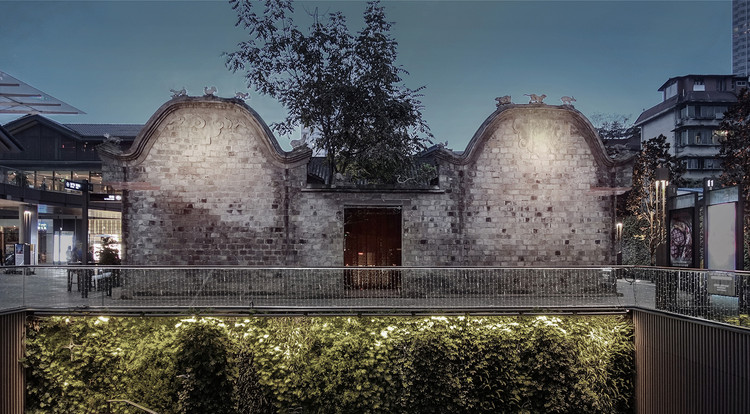
-
Architects: MRDA Architects
- Year: 2015

Text description provided by the architects. The rapid urbanization process in China totally splits the historical and contemporary buildings. The abundant history and traditional culture that cities bear is gradually overwhelmed by fanatical development. Historical buildings represent a city’s past that has been given the meaning of urban culture. However, most of the historical buildings have been given up in the impetuous development.

The predecessor of Abbaye Belgium Restaurant designed by MRDA is Ma-lane Temple located in the East part of Sino-ocean Taikoo Li Chengdu, being one of the six historical buildings preserved in the Daci Temple historical area. The Ma-lane temple experienced vicissitudes and was seriously damaged. Thanks for the Sino-ocean Taikoo Li Chengdu project who survived this old building and get it repaired. The restoration and protection is designed by Oval partnership and Architectural Design and Research Institute of Tsinghua University CO.LTD.

When a Belgium Restaurant full of features of Western Church settled in an Eastern temple experiencing centuries of up and downs, the dialogue between Chinese and Western cultures begin.

This old building full of vicissitudes is not only a precious architectural heritage, but a witness of cultural spirits. In the view of architects, the restoration of historical architecture is something that we must do.

MRDA intend to balance the conflicts between historical building and contemporary function with a subtle design technique in order to maintain the historical authenticity and integrity while creating a sustainable activated space for communities at the same time.

In order to express respect to historical building, MRDA did their best to maintain the original architectural materials, colors and structure. In the whole restoration process, MRDA insist: minimum intervention and reversibility.

Rooted on the principle-reserving original architectural form, spatial structure and decorative features, diversify boundaries of courtyard and insert abstract western element, in consideration of surrounding environment and needs of commercial operations. In the balance of abstract and entity, a Western dining area appears in an tiastern historical building with a sense of Zen peace and harmony.
























